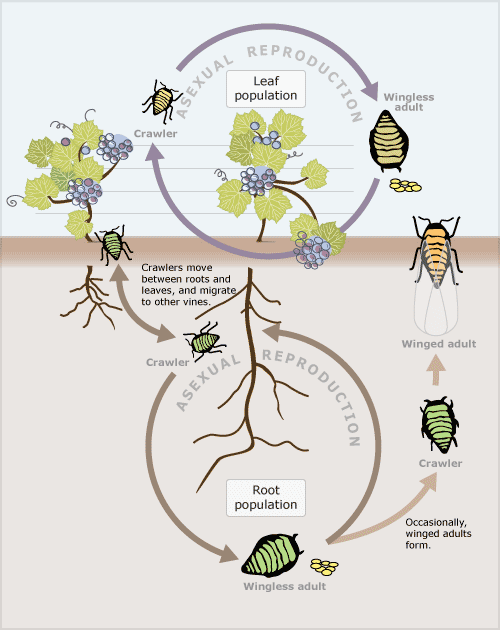
The phylloxera aphid, a tiny insect (up to 1 millimetre long) feeds on the roots of grapevines, affecting their productivity. A native of North America, it is now found in most grape-growing regions of the world including New Zealand. It has a complicated life history with stages on vine leaves and roots. In some countries leaf populations are common, but in New Zealand root populations are prevalent. Wingless adults lay eggs on the vines’ roots, and these hatch into crawlers that develop into wingless adults in a cycle of asexual reproduction – there can be up to five generations per year. (Occasionally winged adults form from crawlers, but these do not seem important for reproduction in New Zealand.) Some crawlers move onto uninfected roots or climb up the vine trunk and settle on leaves over summer. Crawlers can spread to new vines by being carried on shoes or harvest machinery, or by wind dispersal.
Te whakamahi i tēnei tūemi
Te Ara - The Encyclopedia of New Zealand
This item has been provided for private study purposes (such as school projects, family and local history research) and any published reproduction (print or electronic) may infringe copyright law. It is the responsibility of the user of any material to obtain clearance from the copyright holder.
Source: Murdick M. McLeod and Roger N. Williams, Grape phylloxera. Ohio State University Extension fact sheet







Tāpiritia te tākupu hou